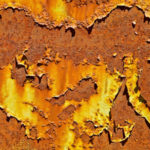More on Supplementary Testing – Now, what else do I want to do?
More on Supplementary Testing –
Now, what else do I want to do?
In the prior articles of this series, the test groups described were for the determination or susceptibility of connectors to basic failure mechanisms:
Vibration/Shock—Fretting Corrosion
- Discontinuity or Nanosecond Events
- Mechanical Integrity
Humidity/Thermal Cycling—Fretting Corrosion
- Wet Oxidation Process
- Degradation of Plastic Housing
Mixed Flowing Gas—Corrosion Issues
Temperature Life—Stress Relaxation
- Dry Oxidation
- Diffusion/Migration/Intermetallic Issues
So what do we do with the catch-all term, Group 5, supplementary tests? Dr. Bob outlined the variety of tests that may be included within this group. Essentially, any destructive tests of interest should be provided for. It can also include application-specific test sequences as well. A popular series of tests, as an example, deal with power applications. In this instance, there are three key elements with which to be concerned:
- Current Rating
- Current Cycling
- Hot Swap
The current rating tests (described in EIA 364, Test Procedure 70) is used to establish how much current can be applied continuously through contacts without exceeding a specific T-Rise, or to determine the T-Rise of the system. An alternate approach is to establish a current derating curve, which establishes and satisfies this premise: The T-Rise, plus operating ambient of the equipment, should not exceed the temperature rating of the equipment. This will result in a “fluctuating” characteristic. The cooler the equipment operation temperature, the more current the contact may carry. The later approach has become a popular concept with users.
A current cycling test is used to determine the susceptibility of a connector to thermal runaway and is a time-dependent mechanism. This is an electrical stress test where the test current of interest is applied and shut off a number of times (500 to 1000 cycles).
“Hot Swap” testing is to assure that connectors can be mated/unmated while the power is still being applied. UL has procedures in place to evaluate this condition.
Another area of testing relates to terminations such as compliant pins (including impact of plated through-hole integrity), SMT solder joint evaluation, etc. In some instances, these tests can be added to the beginning and/or at the end of one or all of the basic sequences that have been discussed.
The above examples may require a series of tests, as opposed to a test that is classified as destructive. Destructive tests are final, no other testing can be applied to the product after a destructive test. Some examples of this are:
- Normal Force
- Porosity Testing
- Solderability and Related Tests
- Crimp Tensile
- Cable Flexing and Bend Radius Cable Tests
- Fluid Immersion Tests
- Resistance to Solvents
Thus, Group 5 may contain several individual tests that are destructive, or some unique sequence which will address a specific application issue.
The past series of articles have presented basic testing concepts and philosophy. Testing should be viewed, not only as what a connector should do, but also what it’s capable of doing. And above all, testing needs to show that there aren’t any “hidden faults” that may cause field failures over time in the final product. This is particularly true in today’s global environment, which is creating new headaches for the design engineer.
It should not be used as “success” testing. Test sequences, in combination with severity levels and environmental durations, have to be put in proper perspective to assure proper field usage requirements can be met or data generated.
Testing should be viewed as a useful diagnostic tool, one that builds confidence in the design and that has clear objectives. Those who create success test sequences (designed to pass) get full credit for a test’s successes—and shortcomings. A meaningful test program has to be carefully and thoughtfully designed and developed, just as carefully as the product which is to be tested. Sample size and the number of variable measurements have to have some degree of statistical validity. Severity levels should be as close as possible to the final application. Environmental durations should be long enough to satisfy expected operational life (this is probably the most difficult one to establish).
Testing should be part of the product development process. It takes a patient, thorough team to develop a proper procedure. If one chooses “success” testing, all I can say is “Good luck and may God be with you.”
- Nanocrystalline Silver Alloy Contact Finishes in Electronic Applications - April 6, 2015
- Nanocrystalline Silver Contact Platings - March 16, 2015
- Dr. Bob on Gold Flash Contact Finishes (and Max Peel) - September 22, 2014






